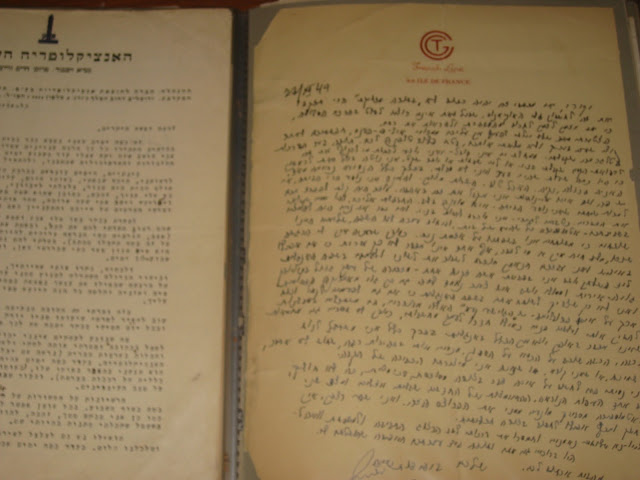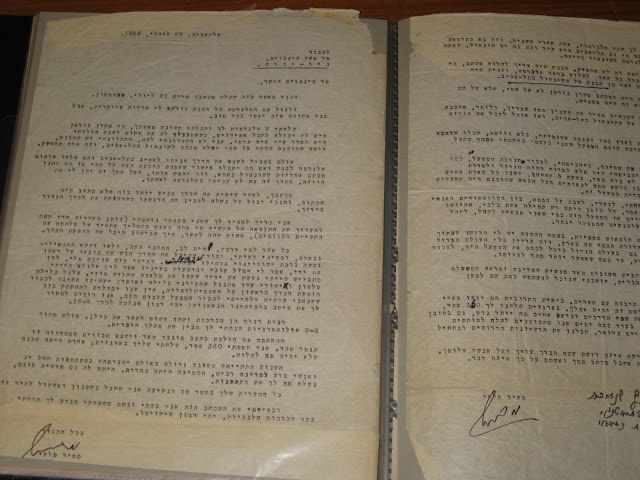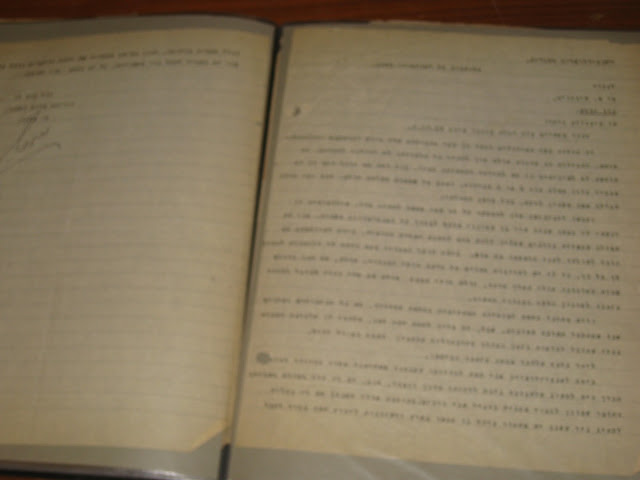A loyal local book addict refused to wait until I cleared shelf space to unload a new collection, he brought from his home a large mobile bookcase and proceeded to neatly unpack the boxes for easy viewing
A fellow who got irritated at hearing a noted speaker wrongly date R. Eliyahu Hacohen (1640-1729) as a 19th century author, had me ship a 17th century copy of his book Shevet Mussar to the speaker's home, in order to prove a point
A six foot tall visiting customer, had me promise that there were no mice in the store basement before he headed in to the shop, explaining that he had an intense fear of mice
Completing an order of books that she was gifting to her husband, the woman remarked, "that should get him off my back for a few weeks"
After viewing a fine library of a Rabbi and scholar, the son of the deceased Rabbi remarked to me, "my father was a nice fellow, but unfortunately a Kofer (heretic)"
An elderly customer was too weak to make his weekly visit to the store, so he hailed a cab and had me bring out ten books at a time to the car. He made his selections, which I mailed to his home
A caller got very irate and anxious when I informed him that a book he requested was not in stock. The book title was Religious Compulsions and Fears by Avigdor Bonchek
After a customer completed a large purchase, I received a plea from a friend of his that I should not sell him any more books, as his family was nearly starving for food, and the book addict can't control his impulses
A grieving woman called in search of a particular poem of Yehuda Halevi, which she informed me was going to be burned and buried with her mother's ashes
Looking for a listening ear, an old customer called to tell him that his wife has kicked him out of his house and is holding his collection of 10,000 books hostage
Placing an order for a set of Zohar, the customer requested it be sent asap, as he was holding off moving in to his new home, until the Zohar was present to protect it
Some prominent recent acquisitions include the libraries of:
Rabbi Moshe Sherer z"l
Rabbi Moshe Sherer (June 18, 1921 – May 17, 1998) was co-Chairman of the Agudath Israel World Organization from 1980, and the Chairman of Agudath Israel of America from 1963, until his death in 1998. Rabbi Sherer was an askan par excellence, credited with building American Jewish Orthodoxy from it's infancy in the post-war period, in to the a politically and religiously influential force it is today. His library reflected his work on many of the current issues of the day, as well as a wide selection of sermon and oratory material, classic works on American Judaism, and a plethora of books inscribed to him by leaders and laymen from all walks of life in the Jewish World.
Rabbi Gilbert Klaperman z"l
R. Mordecai "Motty" Blumenthal z"l
 |
| The Blumenthal Judaica store, ca 1950 |
Born in to a Rabbinic family, Mordechai Blumenthal's father, Rabbi Zelig Blumenthal, a seventh generation Yerushalmi, came to New York City from Jerusalem, Israel with his family in 1950. In New York, he saw that there was a growing demand to supply synagogues with beautiful Torah scrolls. Remembering the workmanship from the old generations, he decided to supply the traditional quality from the old city. Rabbi Blumenthal’s reputation, as a sofer (scribe) of the highest quality, spread rapidly. In a neighborhood of scribes, located in the Lower East Side of New York, he became known as a “scribe’s scribe”, one who followed the laws and customs of one’s heritage. He passed his knowledge on to his son Mordechai Blumenthal, who supplied numerous communities throughout the US with Sifre Torah, Tefillin and Mezuzot. The Blumenthal Judaica store on the Lower East Side was a fixture on the Lower East side for many decades, outliving the score of Judaica Stores that the Lower East Side housed by many decades.
Rabbi Asher Turin z"l
Rabbi Asher Turin, served as Rabbi of the Baycrest Terrace Minyan in Toronto, a chaplain and Rabbi at Yeshiva Ner Yisroel in Toronto as well as a co-director of the Machon Tzvi Institute in Jerusalem. A graduate of Yeshiva University and Yeshivat Ner Yisrael, Rabbi Turin was known for his extensive knowledge of numerous areas of Jewish interest. Never far from his books, Rabbi Turin was known for his warmth, patience and love of books, always sharing his latest reads with his friends, acquaintances and members of his synagogue. His library reflected his wide interests, from Ancient to Modern Jewish History, classic and modern Halakhic works, Jewish-Christian Relations, Israel, the Holocaust and everything in between. Notable was his habit of buying duplicates of books he was reading, so he can always share a copy with a friend.



















































